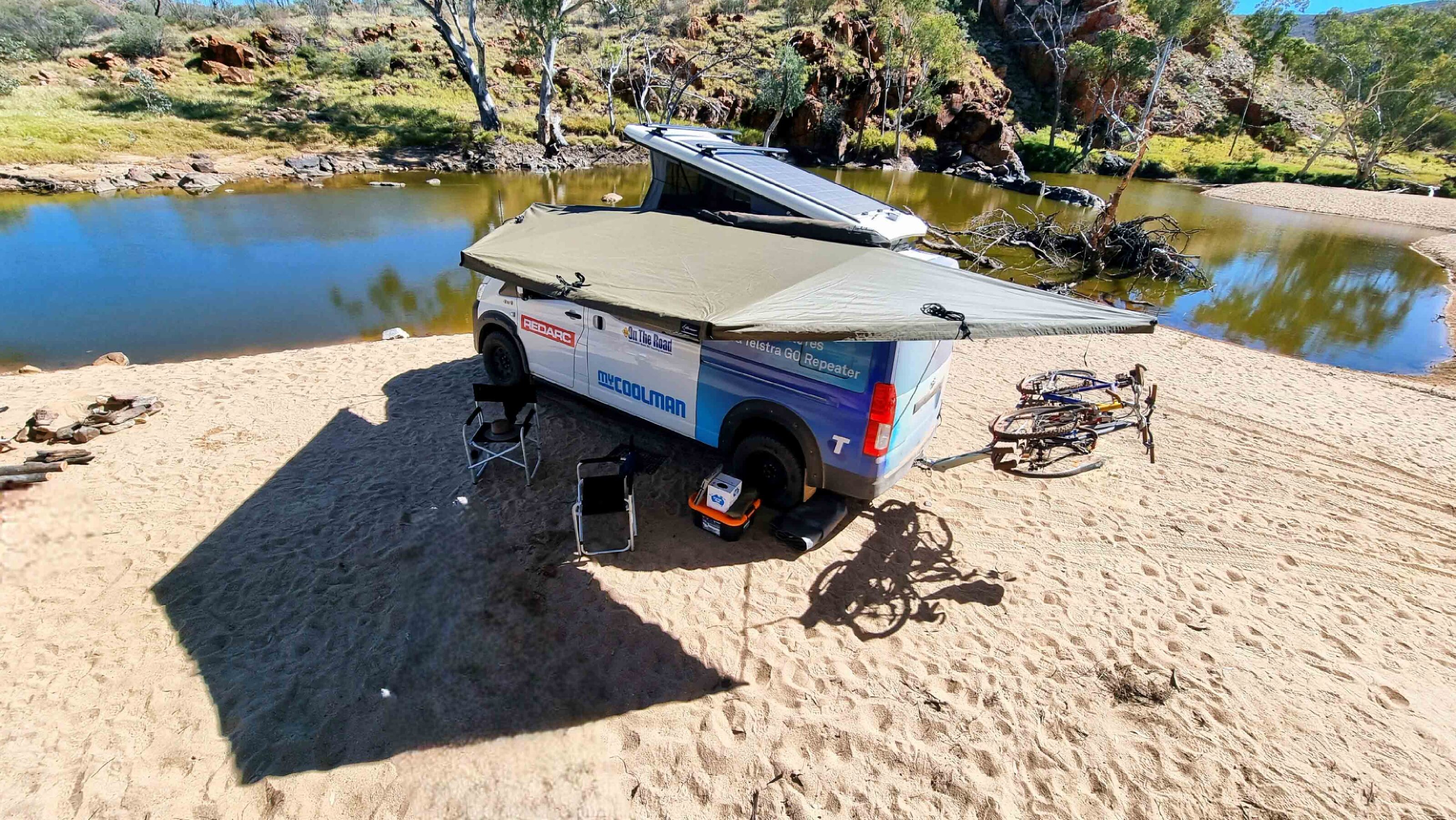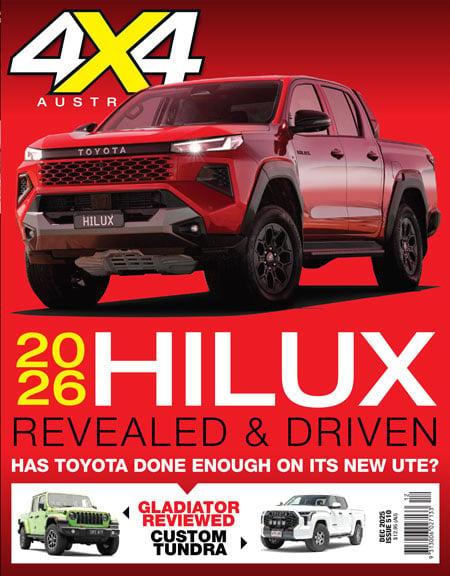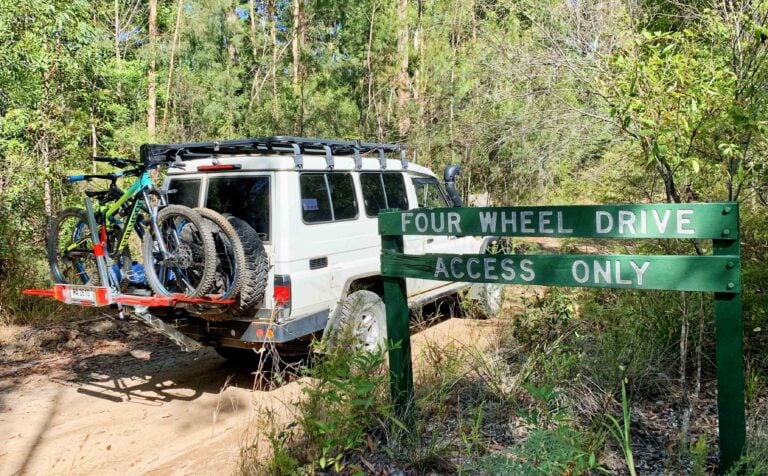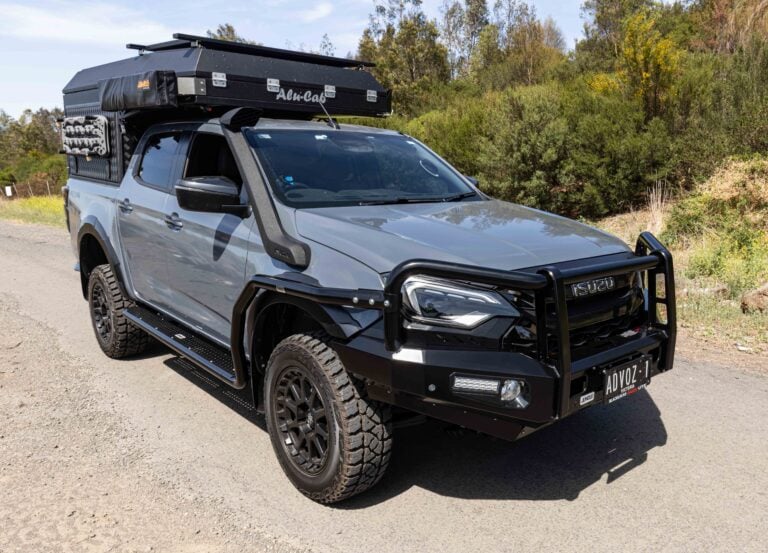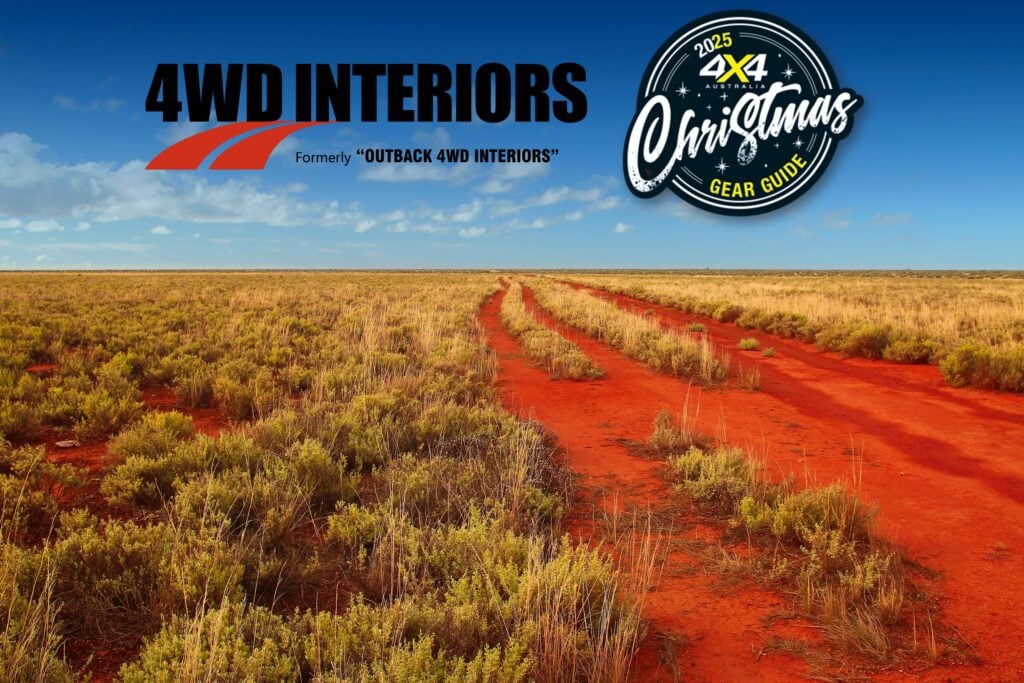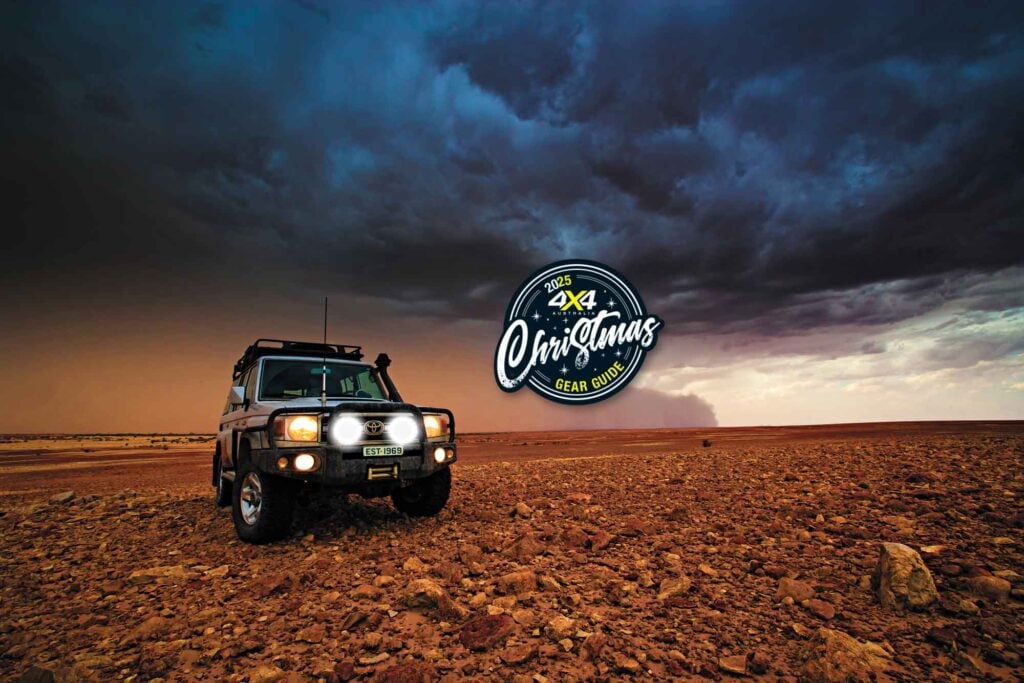Backtrack a couple of years while I was building my 4×4-converted Toyota Hiace. The addition of a decent awning was a ‘must-have’ item on my long wishlist of accessories – not only for rain protection but also for sun, wind and privacy.
Given the rear-opening tailgate of the Hiace, and not wanting to fit an awning too high above the roof line, that ruled out a 270-degree awning that would wrap around the rear of the van, so instead I opted for a 180-degree model.
Bush Company gear, which is of South African origin, has been available in Australia for some time and has earned a great reputation for quality, form and function, so I opted to fit a 180 XT Max awning.
Given the lack of heavy-duty mounting options on my pop-top Hiace, I fitted a set of custom fabricated brackets to handle the weight of the awning. No, you can’t buy these, and no, I don’t have the plans for them, so I won’t make a set for you, but given the standard fitment for most 4×4 applications, the included brackets will be strong enough for most people’s needs.
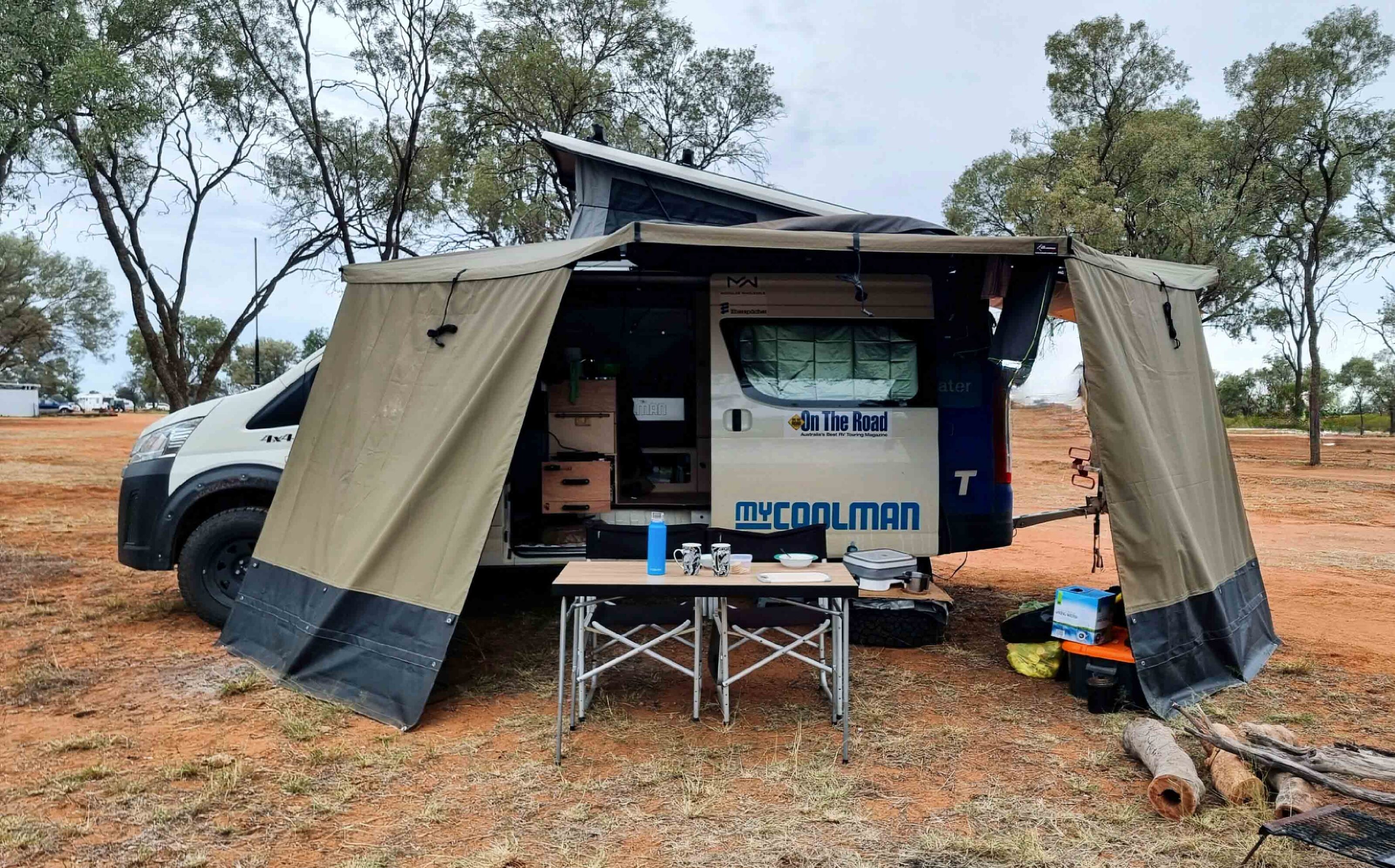
Most awnings consist of three components, and if any of those parts fail, the awning is most likely a bin job, so I wasn’t prepared to fit a substandard one.
The first component is the canvas; The Bush Company utilises a 313gsm polycotton ripstop material in its traditional olive-green colour. It’s a personal choice, but I’d go for a light grey colour, if possible, over the green. Aside from that, the workmanship is excellent, and all stress points have been reinforced to ensure longevity at chafing, rubbing and wear points. The same material is used for the additional walls, which Velcro into position via a 50mm strip sewn under the awning’s valance.
The frame is the part that will see bin day sooner rather than later if inferior materials and design are used. Given our couple of years’ worth of use, along with a few high-wind campsites that have required the use of both poles and guy ropes, I can report no problems with the extruded alloy arms, the stainless steel hinges, the gusseting system of the trussed arms, or the alloy backboard.
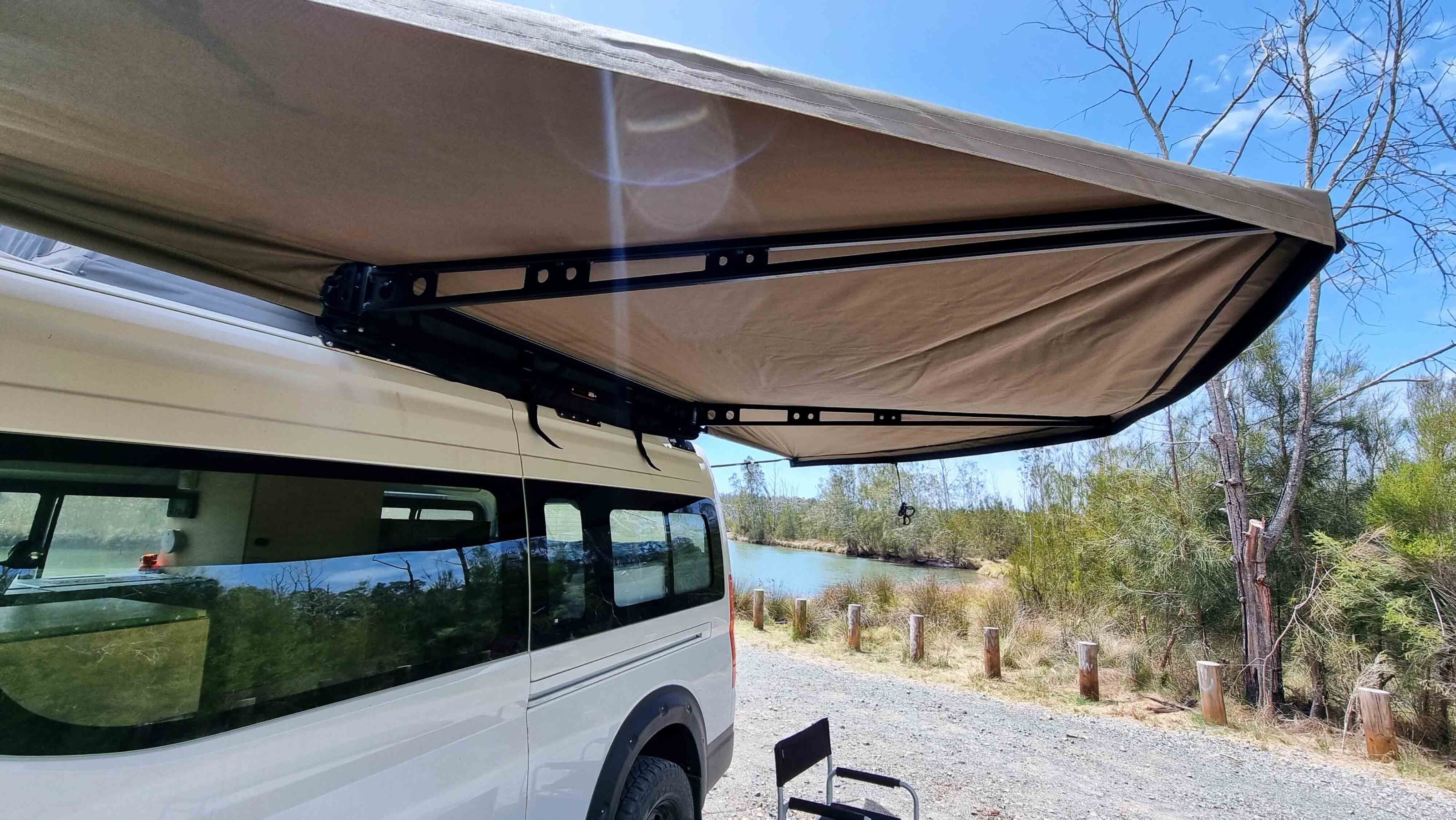
The protective travel bag, with included YKK zips, has proven to be large enough to pack the awning away easily and it doesn’t flap when driving at speed. My only gripe with the 45gsm tonneau-style fabric is that it holds dust rather than an impervious PVC-style material that would wash off easier. Besides personal looks, the cover has maintained its waterproofness, and the quality zippers allow easy usage without jumping a tooth or jamming.
The misnomer that awnings should be strong enough to hold their own weight and be freestanding is somewhat misguided. Yes, the framework, attachment brackets and design should be able to hold the awning arms and material weights, but it’s the uplifting wind that will do the most damage to any awning.
On a calm to mildly breezy day, The Bush Company awning reveals its freestanding ability. Perhaps I am erring on the side of caution, but once the wind picks up and the parachute-like awning is out ready to catch the wind, I always peg a few guy ropes down to ensure the whole shebang doesn’t flip over the Hiace’s roof. Holding the awning down is more important than supporting it or holding it up.
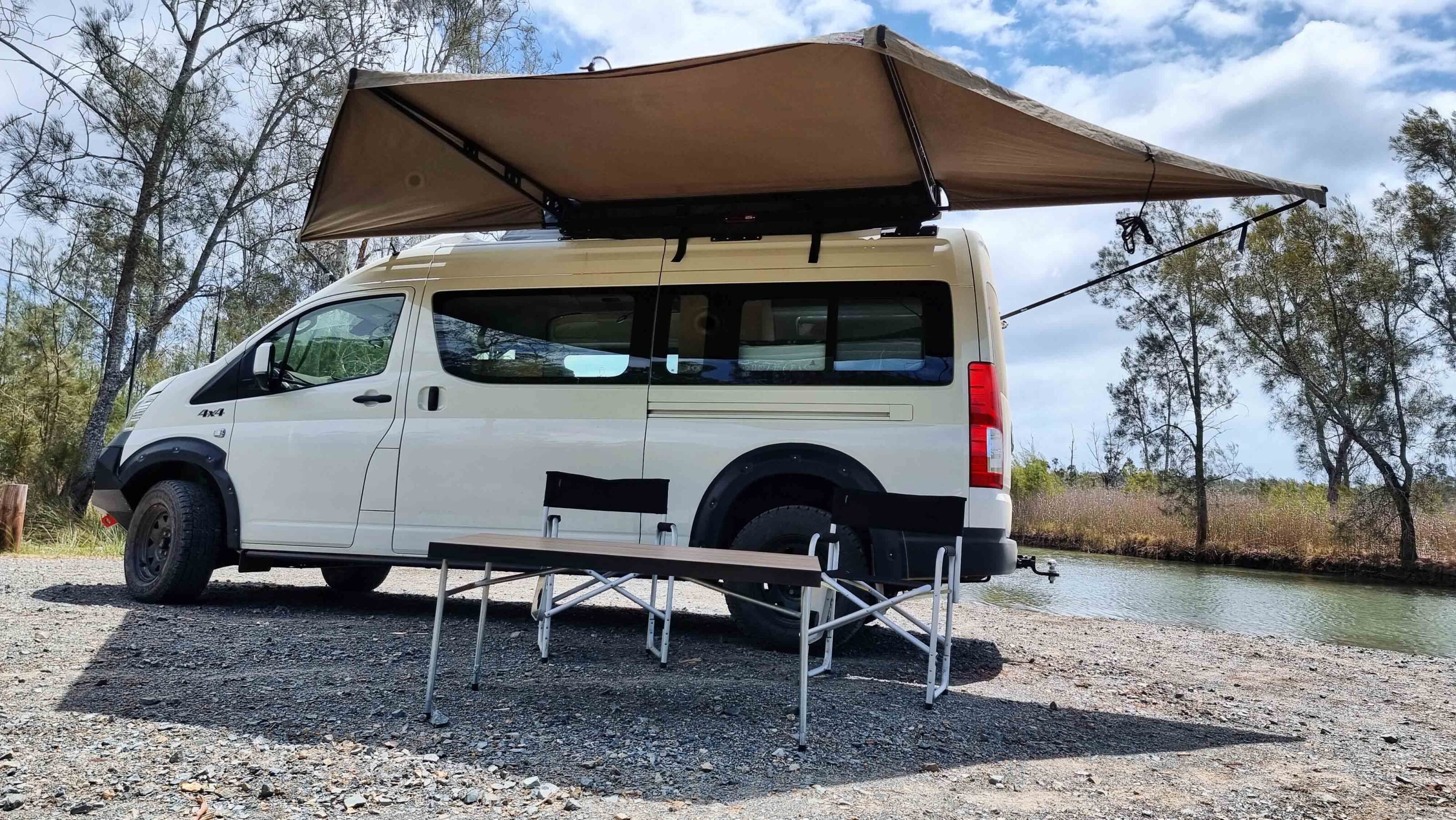
I opted for a pair of side walls; not enough to totally enclose to act as a room, but enough to block most weather elements, plus provide some privacy. Each wall can be positioned anywhere on the sewn-in Velcro strip on the awning, so we adjust the wall position as needed.
Packing the awning away requires a sequence to be adhered to, to allow the four arms to fold inwards on themselves without fouling, but once learned, it’s an easy job. Once packed, the bundle measures just 2.3m long, while when set up, it has a coverage of just over 8.5m2. It’s not as large as a 270° awning, but The Bush Company offers those if required. The overall length when set up is 5.58m, which I’ve positioned to start near the van’s front doors and end at the corner of the rear tailgate when it’s in the open position. Besides the small gap between the awning and the tailgate, this returns a 270° coverage.

